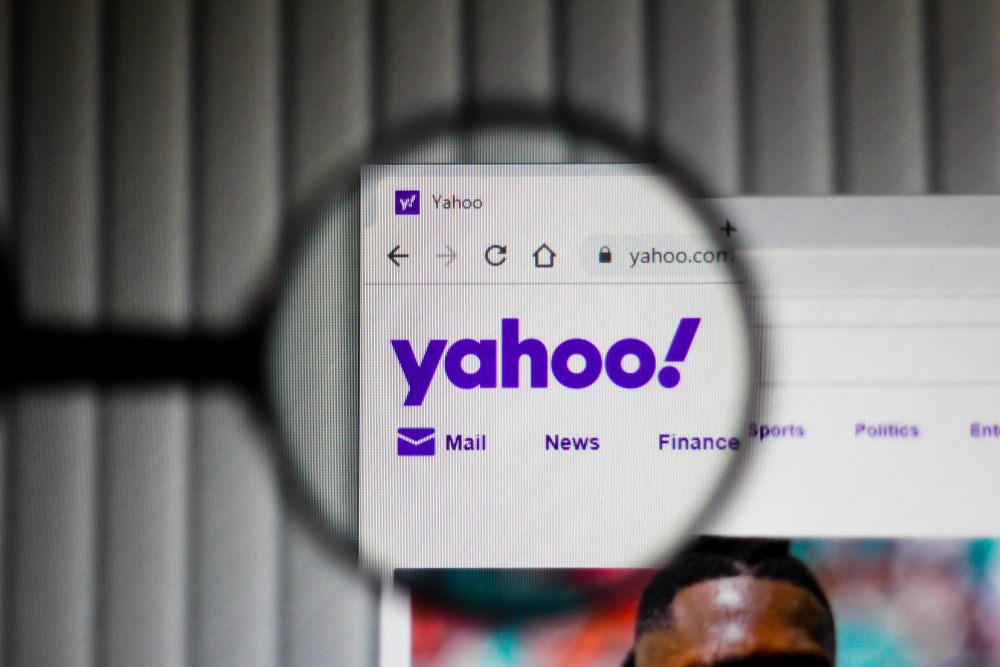Wall Street has seen its share of iconic financial trades throughout its history.
In 1992, George Soros famously shorted the British pound – the trade that “broke the Bank of England” – earning himself and his investors $1.5 billion.
In 2007, John Paulson put on “the greatest trade ever” – and made $15 billion by betting on the collapse of the U.S. housing market.
In 2020, Bill Ackman turned a $27 million bet on corporate bonds into $2.6 billion after the coronavirus crash of 2020 – a profit of almost 100 times his investment.
These trades were massively successful bets by Wall Street standards.
But they are dwarfed by the value of money made (and lost) in different kinds of “trades” placed by the tech giants of Silicon Valley.
It’s no exaggeration to say that the success – and failure – of these trades established the constellation of today’s tech giants, which dominates the world’s internet outside of China.
And no other story illustrates this better than the boom and bust of Yahoo.
The Rise and Fall of a Silicon Valley Icon
Investors of a certain age will remember that Yahoo was one of Silicon Valley’s internet pioneers.
Alas, Yahoo is now a shadow of its former self and has a far smaller footprint on the internet than it once did.
Here’s a quick – albeit incomplete – history of Yahoo’s rise and fall.
In January 1994, Stanford students Jerry Yang and David Filo created “Jerry and David’s Guide to the World Wide Web.” A year later they incorporated the project and renamed it “Yahoo!”
Yahoo rapidly became one of the world’s leading internet portals. It offered email, games, travel, weather, maps and an online magazine.
Yahoo floated on the Nasdaq on April 12, 1996. Its share price soared from the initial public offering price of $13 to $33 in a single day.
Yahoo was an iconic Silicon Valley success story, following in the footsteps of Hewlett-Packard (now two companies, NYSE: HPQ and NYSE: HPE), Intel (Nasdaq: INTC) and Oracle Corporation (NYSE: ORCL).
In 1998, two other Stanford students – Sergey Brin and Larry Page – offered Yahoo a chance to license their search technology for $1 million. The pair wanted to focus on their graduate work at Stanford.
Yahoo declined the offer. But it suggested that Brin and Page start their own company.
Yahoo even introduced them to Sequoia Capital – a blue chip Silicon Valley venture capital firm – which became their company’s first investor.
In January 2000, at the peak of the dot-com boom, Yahoo’s market capitalization peaked at $125 billion. It became the most valuable company in the world. Its share price plummeted 95% from there – though it did recover in later years.
Around 2002, Yahoo tried to buy Brin and Page’s company, now called Google.
The deal fell through because Yahoo was willing to pay only $3 billion rather than the $5 billion that Page and Brin were asking for.
(Ironically, Yahoo had bought Broadcast.com in April 1999 for $5.7 billion to grow its web broadcasting services. It shut down these services three years later.)
Yahoo started to lose momentum.
In 2008, Microsoft tried to acquire Yahoo’s entire business for $44.6 billion.
But Yahoo’s management nixed the deal, making the wrong call again.
By the time it was sold to Verizon eight years later in 2016, Yahoo’s core internet business was worth just $4.8 billion.
Yahoo – the internet pioneer – had gone from hero to (almost) zero.
Lessons From Yahoo’s Demise
You can draw several insights from Yahoo’s “bad trades.”
First, far more money is made – and lost – in Silicon Valley than in the world of Wall Street hedge funds.
To put the comparison into perspective…
Today, Apple (Nasdaq: AAPL) and Google parent company Alphabet (Nasdaq: GOOGL) boast market caps of $2.85 trillion and $1.84 trillion, respectively.
In contrast, Bridgewater, the biggest hedge fund globally, has $140 billion in assets under management. Its value as a company is a fraction of the value of Silicon Valley’s tech giants.
Second, bad decisions on Wall Street may cost hedge funds hundreds of millions of dollars. But in Silicon Valley, poor decisions can cost hundreds of billions – and even trillions – in forgone profits.
To further add to its impressive collection of these bad decisions, Yahoo tried to buy Facebook Inc. – now Meta Platforms (Nasdaq: FB) – in 2006. But the deal fell through when Yahoo refused to increase the initial bid of $1 billion by another $100 million.
Third, a few good decisions can make a company’s future.
Consider the decisions of two Silicon Valley winners.
Google bought YouTube for $1.65 billion in 2006, just 18 months after its founding.
Facebook Inc. bought Instagram – with its 13 employees – in 2012 for $1 billion.
Both of these “trades” paid off spectacularly for the pair.
On its own, YouTube would be a $170 billion business today – far more than what Yahoo was worth at its dot-com bubble peak.
Instagram is worth about $100 billion as a stand-alone company and is a backbone of Meta’s business.
The takeaway?
Yahoo’s series of “bad trades” led to its ultimate demise as an independent company.
In contrast, Google’s and Facebook’s “good trades” helped ensure their future domination of large swaths of the internet.
Iconic trades on Wall Street make for good stories.
But Silicon Valley’s trades are where the real action is.
Click here to watch Nicholas’ latest video update.
For the latest news from Nicholas, connect on Facebook and Twitter.

